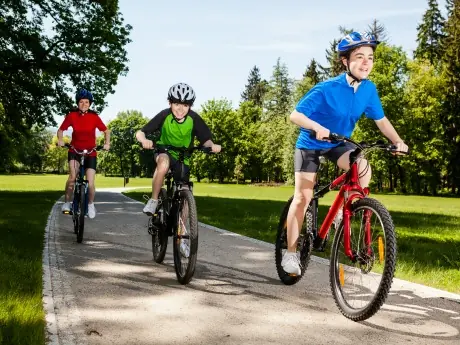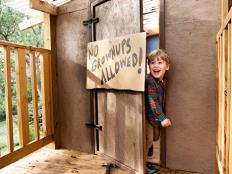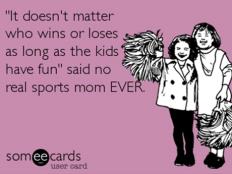
In only a few years, a child can quickly advanced through the elementary stages of cycling. He or she outgrows the bike seat, learns to pedal and steer on their trike, and has the training wheels ripped off their first singe-speed bike. But it can be difficult to know when your child should graduate to the next level of cycling or when cycling skills are advanced enough for their first multi-speed bike.
A multi-speed bike can be a difficult transition for children, as switching gears and hand braking add new facets to balancing, pedaling and steering. Such a transition is particularly difficult for children who are uncoordinated or lacking athleticism. However, for an athletic child outgrowing his or her previous bike, a multi-gear bike is likely your best option.
More: A Guide to Buying Your Child's First Bike
What Are the Advantages of a Multi-Speed Bike?
Most children begin their two-wheel adventures on a single-speed bike with foot brakes. This simplicity allows your child to keep attention on pedaling and steering, alleviating the complexities of changing gears. These bikes are perfect for beginners, but once a cyclist's abilities progress, they might want to go up hills more easily by using a multi-speed bike.
Having to switch gears while utilizing a hand brake adds complexity to cycling and promotes coordination in children. With a multi-speed bike, your child will learn to climb easily and navigate roads and sidewalks at higher speeds.
This may be frightening for parents, which is why your child must master cycling basics and understand the rules of the road before going around town on his or her first 10-speed. However, once mastered, a multi-speed bike will make cycling an even greater experience for your child.
If your child has a clear command of cycling basics–-balancing, steering and pedaling–-and has a good sense of the rules of the road, you shouldn't sweat your decision to buy your child a multi-speed bike.
Most children begin their two-wheel adventures on a single-speed bike with foot brakes. This simplicity allows your child to keep attention on pedaling and steering, alleviating the complexities of changing gears. These bikes are perfect for beginners, but once a cyclist's abilities progress, they might want to go up hills more easily by using a multi-speed bike.
Having to switch gears while utilizing a hand brake adds complexity to cycling and promotes coordination in children. With a multi-speed bike, your child will learn to climb easily and navigate roads and sidewalks at higher speeds.
This may be frightening for parents, which is why your child must master cycling basics and understand the rules of the road before going around town on his or her first 10-speed. However, once mastered, a multi-speed bike will make cycling an even greater experience for your child.
If your child has a clear command of cycling basics–-balancing, steering and pedaling–-and has a good sense of the rules of the road, you shouldn't sweat your decision to buy your child a multi-speed bike.
When Should I Buy My Child's First Multi-Speed Bike?
Every child's cycling abilities differ. What might be an obvious decision for one 10-year-old is not necessarily the right decision for another: Putting stringent age guidelines for transitioning your children to multi-speed bikes doesn't work.
Many times, the decision comes down to growth. Most bikes suited to fit a 9- to 12-year-old are multi-gear bikes. When your child outgrows a single-speed bike, you'll have fewer fixed-gear options at your local cycling shop or department store.
Remember, hand brakes and gears add a great deal of complexity to cycling, so give your child careful instructions and remain patient the first few times they are on the road.
More: Road Safety Tips for Kids: Cycling, Skating and Skateboarding
What Multi-Speed Bike Should I Buy?
The days of surprising your kid with a bike under the Christmas tree are long gone. Instead, when buying your child's first multi-speed bike, you need to make sure the fit is just right for your son or daughter. Test out bikes at your local bike shop or department store. Make sure the frame size matches your kid's height, the gears and hand brakes are in comfortable positions and, of course, the color is just right. One important rule to keep in mind: The name brand does not matter as much as the fit.
For children between 4'0" and 4'7", you'll want a bike with 20-inch wheels. For taller children, you'll want a bike with 24-inch wheels. Most children 9 years old and older will require a bike with 24-inch wheels.
Most entry-level, multi-speed bikes for kids range from 6-speed to 10-speed and mimic adult mountain bikes. The thicker tires and suspension system help with traction and balance as a youngster gets used to switching gears. We also recommend easily operated twist shifters toward the base of the handlebars, as such gear shifters make adjusting gears easier.
More: What's Better for You and Your Child: Bike Seat or Trailer?
 Search for a kids camp.
Search for a kids camp.









Discuss This Article